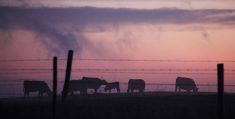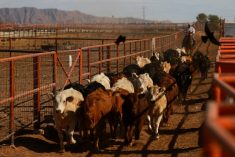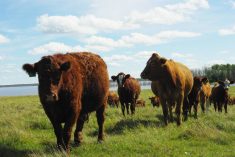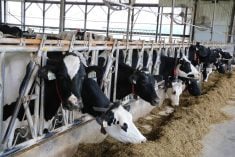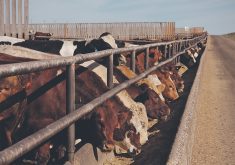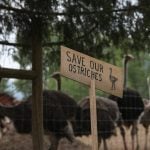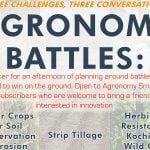Tyler Torrie with Riverview Ranch was looking for an effective solution to herd livestock in southern Alberta’s diverse terrain.
He may have found it, thanks to eShepherd virtual fencing.
A pilot project conducted this summer on land north of Bow Island has worked well, Torrie said.
Read Also
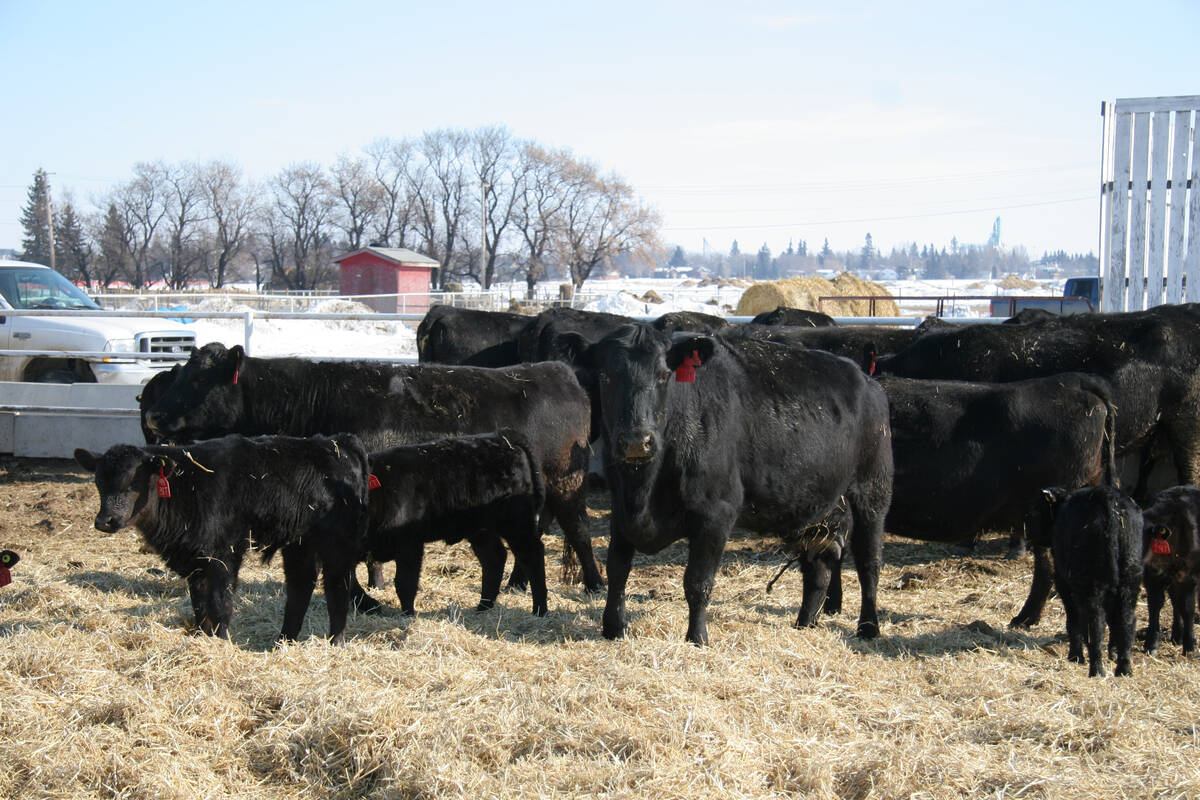
High cattle prices can be challenging
Large capital investments coupled with consumer demand makes for long-term planning among Canadian cattle producers
The 3,000 acre operation has has no internal fencing.
“We’re right on the river, so we have a lot of river cliff hills, a lot of coolies. We started looking at the collars before even getting the Bow Island ranch around here. You see a lot of these cliff faces here with about 7 1/2 miles of riverfront with a lot of area to cover. We have cattle that will sometimes sneak across the river, and in Grassy Lake, it’s a long ways around to get to the bridge,” said Torrie.
As well, they have to keep livestock away from the access roads to a nearby gravel pit.
“We also have a lot of sloughs/watering holes that just aren’t great for cows going down in there.”
With the help of 75 per cent grant funding that offset a large portion of the price tag for the collars, which cost $350 each, the ranch started testing the technology in late June-early July.
The electronic collars work through a GPS-based virtual fencing system. They are solar powered with seven to 10 years of battery life.
The collars are placed around the cows’ necks, and a digital fence boundary is mapped out. The collar emits audio cues as an animal gets within 2.5 metres of the virtual fence, which will eventually turn into a pulse to turn it back.
“Once they do get through the fence, it (the shock) doesn’t continue. So if one cow is out on her own, that one is not getting consistently shocked. It then just sends an alert, saying this cow is out,” said Sonja Shank, program co-ordinator for the Agriculture Research and Extension Council of Alberta, who attending Torrie’s recent presentation at the Innovation on the Range field day in Bow Island to explain funding opportunities.
”It turns the collar off until the cow goes back in. She’s not coming back up to that fence and getting that reverse signal.”
Producers have a choice between cellular and radio collars. They don’t need to set up a radio tower with cellular, but it can have problems, depending on land-area reception.
Monthly fees and cellular data are also more expensive than radio.
“Downside of cellular is if you have a lot of coulees, river, hilly area as well (for reception),” said Torrie.
He found that cellular worked in most areas but decided to go with radio.
The animals were trained for a few weeks with real fencing on three sides and a straight line virtual fence on the fourth. After a few days, the fencing would be opened up to the next area as the cattle progressed.
“It was super successful,” he said.
“We didn’t have a single one that broke through (in initial training). You could see the tracks and see them bouncing off the line, bouncing off the line, and then the day it opens up, boom, they all move into that next area, bouncing off the line, bouncing off the line, grazing next day, next time it opens. So they would just constantly move to that next area, but they would never break out.”
The system allows for remote management through a mobile/web app, which tracks individual animal movements and provides heat maps of grazing patterns. Torrie said this maximizes land capability for areas that may have not been grazed before in responsible rotations.
When drawing virtual fence boundaries, producers are advised to be cautious and avoid drawing too many complex jagged boundaries that could confuse cattle. They should also use a minimum number of angles while ensuring water access within boundaries. More complex layouts can be done once cattle are fully trained.

“We have some producers who are using it to create alleyways to come back to water,” Shank said.
“They have to really think very carefully. They say that you want at least 30 feet for the alleyway. If you have a bunch of cows coming up, somebody’s not on the edge having a nervous breakdown because it’s going ‘beep,’ ‘beep,’ ‘beep’ (when) they are walking down there.…
“So you might have a right angle at your water point, but then he learned you have to put the right angle past the water point so that when cows can come in, they can go all the way around and not have a mental breakdown every time they decide to have a drink.”
Testing has been done in Colorado and Montana, which have harsh winters similar to Canada, to ensure the collars’ solar capabilities are adequate.
Torrie said he was pleased overall with the collars. His feedback to the supplier, Gallagher, for improvements included making the clips more durable, ensuring the chains don’t come loose if not tightly secured and strengthening collars for larger bulls.
“The bulls are a lot more rough on these collars than our heifers,” said Torrie.
“The problem is they’re trying to balance it where it has a 500-600 pound break-away. If they get caught on something, (for safety), they can break it. So you don’t want to make it impossible to break. If you break it off, then you have a cow out there without a collar. The nice thing is, it’s pretty easy to find these because the GPS are active, so you can see it. You also get an alert on your phone saying the animal hasn’t moved in a couple hours.”



